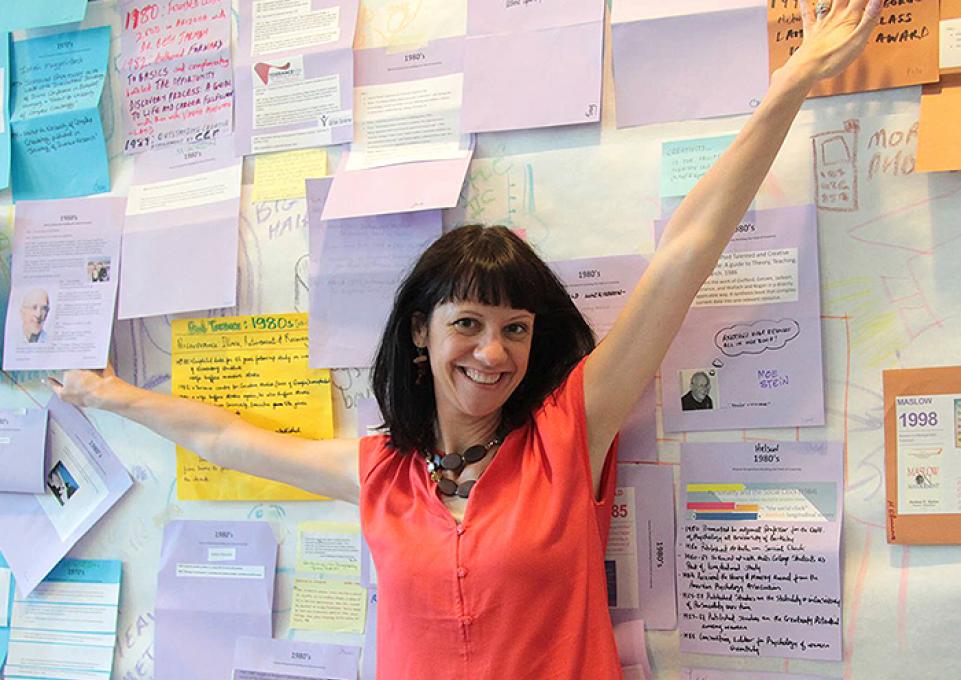
After seeing a production of Joseph and the Amazing Technicolor Dreamcoat starring Donny Osmond when she was a child, Cyndi Burnett, associate professor in Buffalo State’s International Center for Studies in Creativity (ICSC), said she got the musical theater bug.
Immediately after graduating from Niagara University and moving to New York City, she found herself in the enviable position of landing a role in a Broadway touring show. However, she soon learned that anything can become rote and uninteresting, even performing in a well-loved musical, when you have to repeat it 180 times in 89 cities with the same outcome in mind.
Burnett knew she wanted to do something beyond the stage, but when she returned to her parents’ Lewiston, New York, home exhausted and deflated, she wasn’t sure what that something was. Inspiration came from a former voice teacher.
“She told me, ‘Stop thinking about what you want to do and think about what you want to learn,’” Burnett said. “What I wanted to learn about was creativity.”
Less than a week later, Burnett discovered the ICSC—the first program in the world to teach the science of creativity at a graduate level—and began her journey into the many facets of creativity.
Upon completing her master’s degree in 2001, Burnett was hired as a graduate assistant to manage the center’s distance education program. She later entered a doctoral program at the University of Toronto where she explored creative problem-solving as it relates to education.
In the ensuing years, she has conducted research on creativity in children, creative thinking in higher education, and current trends in creativity. She co-wrote the 2015 book Weaving Creativity into Every Strand of Your Curriculum with Julia Figliotti (KnowInnovation).
During her sabbatical in 2017–2018, Burnett plans to visit schools throughout Western New York to help teachers tap into their own creativity.
“I want to help teachers create a climate of trust and openness, risk-taking and idea support in the classroom,” she said. “Some people tell me they’re not creative. But we know everyone has the ability to be creative.”
Teachers are looking for new ways to reach students both to adequately prepare them for state tests and for the competitive world after graduation.
“All educators grapple with how to prepare students for the future,” Burnett said. “They have to be able to navigate the changes coming. So many things now are ambiguous. This is why we need creative thinking skills now more than ever.”
Burnett recalls that when she was a creativity student, she was one of the few artists in the room. She was surrounded by business people, lawyers, and advertising account managers because the scientific approach to creativity can be applied to so many different fields.
“At the time, no one knew what I was talking about when I said I was studying creativity,” she said. “The mindset in that area has changed, partly due to technology and partly due to the fact that employers clearly indicating that the main skill they’re looking for is creative problem-solving, which they’re not seeing in many job candidates. More and more industries are recognizing how important creativity truly is.”
Whether she’s teaching a class, hosting a symposium, or working one-on-one with educators, Burnett wants to pass along the passion she has for the field, one she finds fiercely important.
“Studying creativity opens up a world of possibilities both in your professional and personal world,” she said. “The biggest revelation for me as a student going through the creativity program was that I can do anything I want with my life.”
